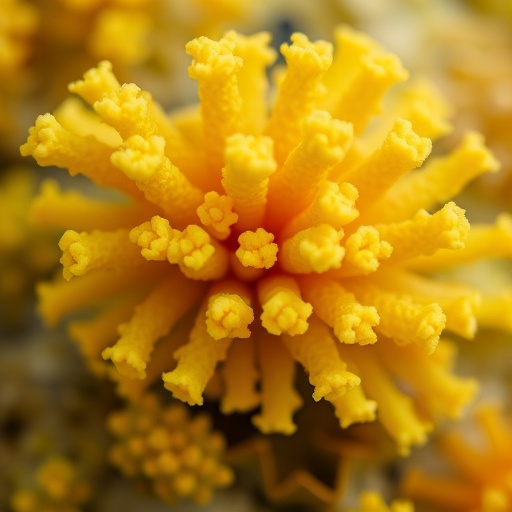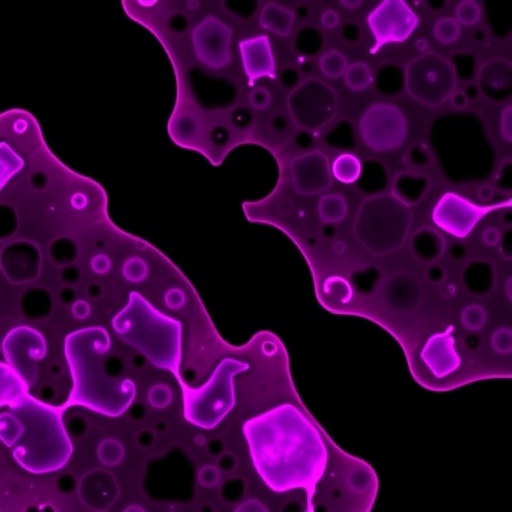PROTECT YOUR DNA WITH QUANTUM TECHNOLOGY
Orgo-Life the new way to the future Advertising by AdpathwayIn a remarkable advancement at the intersection of chemistry and biomedical engineering, a collaborative team led by Academician Xiaojun Peng from Dalian University of Technology, alongside Associate Professor Haidong Li and Professor Juyoung Yoon from Ewha Womans University in South Korea, has unveiled a novel series of near-infrared (NIR) dyes showcasing aggregation-induced emission (AIE) properties. This breakthrough leverages an innovative electron-acceptor engineering approach to precisely regulate the excited-state dynamics of organic dye molecules, enhancing their multifunctional capabilities for applications in photodynamic therapy (PDT), photothermal therapy (PTT), and photoacoustic imaging (PAI). Published recently in CCS Chemistry, their research marks a significant milestone in the design of smart, light-activated agents for cancer treatment and diagnostic imaging.
At the heart of this advancement lies the strategic molecular modification of the xanthene scaffold by introducing diphenylamine groups. This substitution significantly increases the molecular flexibility by adding freely rotatable single bonds and induces pronounced molecular asymmetry. These structural changes are instrumental in strengthening the aggregation-induced emission—a phenomenon where molecular assemblies emit light more efficiently than individual molecules—thus overcoming the limitations of traditional dyes prone to aggregation-caused quenching. The enhanced AIE character not only improves fluorescence brightness under physiological conditions but also facilitates the dual therapeutic and diagnostic (theranostic) potential essential for precision oncology.
One of the pivotal findings in this work is the tunability of the optical and therapeutic properties through variation in the number of cyano groups attached to the dye molecules. Cyano groups, known for their strong electron-withdrawing capacity, modulate the electronic distribution within the dye framework. By adjusting these substituents, the researchers finely tuned the excitation wavelengths into the near-infrared window, a spectral region highly desirable for biomedical applications due to minimal tissue absorption and deeper penetration depth. This molecular tailoring also affects the efficiency of reactive oxygen species (ROS) generation required for PDT and the photothermal conversion efficiencies critical for PTT.
Among the synthesized dyes, Hcy-ON emerged as a standout candidate with unparalleled photodynamic and photothermal performance under 760 nm laser irradiation. Upon exposure to this near-infrared light, Hcy-ON efficiently generates reactive oxygen species, which induce cytotoxic effects targeting cancer cells. Simultaneously, the dye exhibits excellent heat-generating capabilities, enabling it to ablate tumors through localized hyperthermia. This dual-functionality is especially valuable in the context of combined or multimodal cancer therapies, where synergistic mechanisms can enhance treatment outcomes while minimizing side effects.
The mechanistic origins of Hcy-ON’s extraordinary performance were elucidated through in-depth molecular theoretical calculations. Notably, the dye demonstrated a significant spin–orbit coupling matrix element (SOCME), a quantum mechanical parameter pivotal in facilitating effective intersystem crossing from the excited singlet state (S1) to the triplet state (T1). This transition is critical for ROS production as it populates the triplet state necessary for energy transfer to molecular oxygen, forming cytotoxic singlet oxygen species. With a minimal energy gap of only 0.678 eV between S1 and T1, Hcy-ON efficiently navigates these electronic states, enhancing its PDT capability.
Furthermore, the research team conducted comprehensive analyses of photothermal properties by investigating multiple physicochemical parameters, including the singlet–triplet energy gap, electron transition dynamics, root-mean-square displacement (RMSD), and the Huang–Rhys factor. These factors collectively describe the vibrational coupling and structural relaxation processes following photoexcitation, which are closely tied to the ability of the dye to convert absorbed photon energy into localized heat. The relatively large RMSD and Huang–Rhys factors observed for Hcy-ON correlate well with its impressive photothermal conversion efficiency, marking it as a robust photothermal agent.
Beyond therapeutic implications, the dyes hold promise as contrast agents for photoacoustic imaging. PAI combines the optical excitation with ultrasonic detection, offering high-resolution visualization of deep tissues. The near-infrared absorption and strong photothermal effects of these dyes enhance photoacoustic signal generation, potentially enabling more precise tumor localization and real-time monitoring of therapeutic progress. The multifunctional nature of these dyes, facilitated by rational molecular design, heralds new paradigms in non-invasive cancer diagnostics and therapy.
The electron-acceptor engineering strategy employed here exemplifies the power of precision molecular design in tailoring excited-state dynamics to elicit desired photophysical outcomes. By manipulating donor–acceptor interactions within the molecular framework, the researchers have effectively controlled radiative and non-radiative decay pathways. This control translates into optimized emission properties and maximized photothermal and photodynamic effects, demonstrating the sophistication achievable in next-generation theranostic agents.
This study also highlights the significance of integrating computational modeling with experimental photophysics and bioassays. Theoretical insights into electronic transitions and vibrational behaviors guided the synthesis and selection of promising candidates like Hcy-ON. Such a synergy between theory and experiment is indispensable for accelerating the discovery and development of advanced functional materials in biomedicine.
Importantly, the collaborative international effort underscores the value of interdisciplinary and cross-institutional research in tackling complex challenges like cancer therapy. By combining expertise in synthetic chemistry, photophysics, molecular modeling, and biomedical engineering, the team delivered a comprehensive study with practical translational potential. Their work sets a precedent for future explorations of AIE-based NIR dyes in multimodal therapeutic and diagnostic applications.
In conclusion, the development of this dye series with fine-tuned AIE properties and enhanced NIR excitation represents a transformative stride in photomedicine. Their capability to simultaneously excel in photodynamic and photothermal modalities, coupled with efficient photoacoustic imaging, paves the way for versatile and effective cancer treatments. Continued research building on this electron-acceptor engineering blueprint is poised to unlock new horizons in non-invasive, light-driven tumor therapies, reshaping the landscape of personalized medicine.
As the scientific community strives toward safer, more efficient cancer interventions, innovations like those from Academician Xiaojun Peng’s and Professor Juyoung Yoon’s teams provide a beacon of hope. Their work opens avenues not only for superior therapeutic agents but also for better diagnostic tools that collectively enhance patient outcomes. This promising research invites further exploration and clinical translation to bring these molecular achievements from the laboratory bench to bedside reality.
Subject of Research: Development of near-infrared aggregation-induced emission dyes for multimodal cancer therapies
Article Title: (Not specified in the provided content)
News Publication Date: (Not specified in the provided content)
Web References: (Not specified in the provided content)
References: Published in CCS Chemistry
Image Credits: EurekAlert! / Dalian University of Technology
Keywords
Near-infrared dyes, Aggregation-induced emission, Photodynamic therapy, Photothermal therapy, Photoacoustic imaging, Electron-acceptor engineering, Xanthene derivatives, Reactive oxygen species, Spin–orbit coupling, Molecular photophysics, Multimodal cancer therapy, Molecular excited-state dynamics
Tags: aggregation-induced emission propertiesbiomedical engineering breakthroughscancer treatment agentselectron-acceptor engineeringfluorescence brightness improvementmolecular modification techniquesnear-infrared dyesphotoacoustic imaging innovationsphotodynamic therapy advancementsphotothermal therapy applicationssmart light-activated therapiesxanthene scaffold design


 2 hours ago
9
2 hours ago
9





















 English (US) ·
English (US) ·  French (CA) ·
French (CA) ·